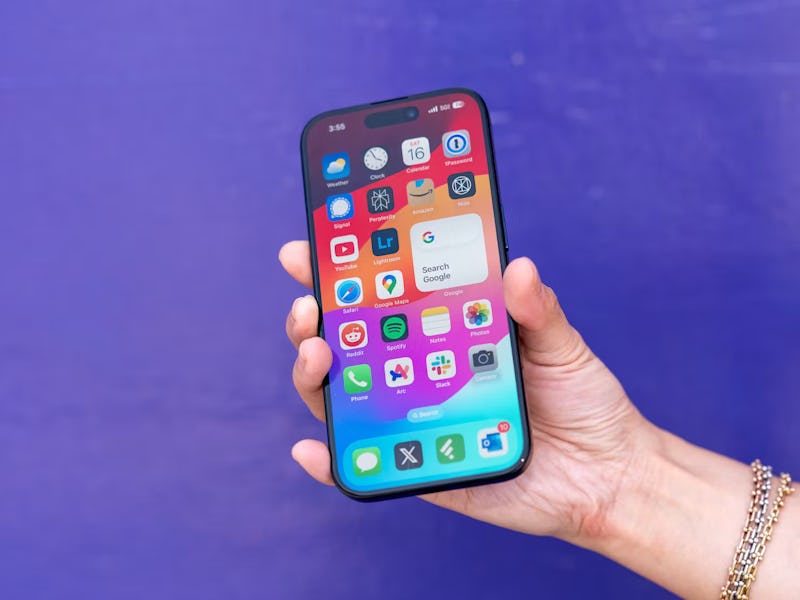This New iOS Feature Will Let You Use Your iPhone in the Car Without Throwing Up
I just want to kill time on long drives without getting a ton of nausea.

If you’re in for a long drive, your natural instinct is to reach for your smartphone or tablet to kill some time. However, I’m one of the unfortunate souls who can’t look at my iPhone for more than a few minutes before being smacked with a massive bout of nausea. So far, the best remedy I’ve come up with for this is to not use my iPhone at all when I’m riding in a car.
Apple, however, will not stand for that. Instead, the company revealed an upcoming feature called Vehicle Motion Cues that could solve the issue of smartphone-induced motion sickness while driving. To better understand Apple’s solution, we have to understand why we feel like vomiting after doomscrolling on our smartphones in a car. When you’re looking at your still iPhone, it doesn’t match up with your body sensing that it’s in a moving car. That contrast leads to motion sickness that could put you out for the rest of the day.
Maybe you can get some work done on the iPad while on the road now.
A Simple Visual Cue
To solve that, Apple is introducing Vehicle Motion Cues, a feature that places animated dots on the edge of your iPhone or iPad. These dots move based on how the car is driving, giving you a visual representation of any turns or changes in speed. The feature is simple, but it’s meant to help your brain better process what your body is feeling while your eyes are locked onto the device. Take a look at Apple’s demo here if that explanation still doesn’t make sense.
You can set the Vehicle Motion Cues to show automatically on iPhones or you can manually turn this on and off in the Control Center.
The dynamic dots should trick your brain into understanding that your body is moving.
Without using it myself, I can’t say that the feature is going to be some magical cure for motion sickness, but at this point, anything is worth a shot.
And if motion sickness isn’t a problem for you, Apple also revealed some more impactful accessibility features alongside Vehicle Motion Cues. We can expect features like Eye Tracking, which lets you navigate an iPhone or iPad with just your eyes, and Music Haptics, which plays taps, textures, and vibrations based on audio. Apple also designed Vocal Shortcuts that can launch shortcuts for complex tasks using custom voice cues, which can even work with atypical speech.
Relief is On the Way
Apple said it will release all of these features, including the Vehicle Motion Cues, later this year. We’re guessing these accessibility upgrades will be introduced in the upcoming iOS 18 update, which should drop sometime in September along with the latest iPhone models. Until then, I have no choice but to simply look out the window or listen to music like someone who’s not addicted to their smartphone.